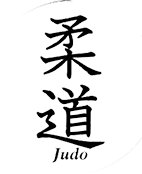Warning; this post presents no concrete evidence but only speculation
Second world war and its aftermath saw lots of books (=interest) about self defence;
The japanese art of wrestling and self-defense : Jiu jitsu : A superior leverage force : Muscle science tricks of Jiu-jitsu, Stein, 1940
Umíte se bránit? : Zápas Jiu-Jitsu, Slípka, 1940
Unarmed combat : The Art of Physical Defence and Attack Practically Explained and Illustrated, Hipkiss, 1941
Edward L. Allen’s system of American jiu-jitsu : a Quick Way to Self Defense in All Emergencies as Taught to Civilians and Armed Forces Throughout the Country, Allen , 942
Get tough! How to win in hand-to-hand fighting, Fairbairn, 1942
Hadaka-Jime: The Core Technique for Practical Unarmed Combat, Feldenkrais, 1942
Self Defense or Jiu Jitsu, Mitchell, 1942
A defense manual of commando Jiu jitsu, Cahn, 1943
American Judo Illustrated : Improved, Modern, Scientific Jiu-Jitsu the Art of Hand-Tohand Combat, Farrar, 1943
Combat conditioning manual : Jiu jitsu Defense, Bayonet Defense, Club Defense, Hanley, 1943
Combat Jiu jitsu for offence and defense Linck 1943
Everybody's self defence, Sagittarus, 1943
Get tough! How to win in hand-to-hand fighting, Fairbairn, 1943
Itsepuolustus : Jiu-jitsu ja poliisiotteet, Schønning (Schönning), 1943
Judo and Its Use in Hand-to-Hand Fighting, Caldwell, 1943
Judo jiu-jitsu and hand-to-hand fighting a list of references, Jones, 1943
Simplified self defense : thru an improved system of Americanized jiu-jitsu and judo, Galen, 1943
Weerbaar zonder wapen : (Jiu Jitsu), Tops, 1943
How to use Jiu Jitsu : Army-tested methods of self-defense for men and women, King, 1944
Judo en la Defensa Personal aplicada al combate Cuerpo a Cuerpo, Garcia Arzua, 1944
Manuel pratique de jiu-jitsu : la défense du faible contre l'agresseur, Feldenkrais, 1944
Selvforsvar, Jiu jitsu og politigrep, Schønning, 1944
Combat Judo, Carlin, 1945
El arte de la defensa propria, Garcia Arzua, 1945
Konsten att försvara sig : Jiu-jitsu japansk försvarsmetod, Ricthoff, 1945
Dokonalá sebeobrana : Džiu-džitsu, Zrůbek, 1946
Jiu-Jitsu, umění sebeobrany, Drobeček, 1946
Sports de combat : judo boxes anglaise et francaise et méthode de défense contre un agresseur, Poulain, 1946
El Arte del la Defensa Personal, Cascante, 1947
Judo mastery in self-defense, Smith, 1947
O fraco vence o forte, golpes de Jiu-jitsu, ou Judo, sistema nipónico de educacáo física e de defesa individual, Goncalves, 1947
Umite se branit : Zapeo Jiu Jitsu, Slípka, 1947
Yui-Yitsu : praktishe zelfverdediging, Rooker, 1947
Zelfverdediging Door Middel van Jiu Jitsu, Nieuwenhuizen, 1947
Manuel de Jiu-jitsu et Judo a l'usage del la formation premilitaire, Herdt, 1948
20 leçons de jiu-jitsu judo : Défense personnelle, Nieuwenhuizen, 1949
New improved Americanized judo, Sharp, 1949
50 Jahre Jiu-jitsu und Judo mit Erich Rahn : Die unsichtbare Waffe, Rahn, 1950
Defensa Personal (Judo, Jiu-jitsu, Lucha, Boxeo), Valle, 1950
der Selbstverteidigung, Mägerlein, 1950
Jiu-Jitsu : Die kunst der selbstverteidigung : Ein volksbuch zum selbstunterricht, Scholz, 1950
Jiu-Jitsu im Selbstunterricht, Klinger-Klingerstorff, 1950
Ju-do and ju-jitsu : 40 lessons, latest holds, defend yourself against any man, Weider, 1950
Judo And Self-Defense, Shaffer, 1950
Manuel complet de judo et jiu-jitsu, tome 3 : Self-défense, attaques, atémis, boxe, boxe francaise, combat de rue, utilisation des armes, Lamotte, 1950
Defesa pessoal : método eclético - Box - Jiu-jitsu - Capoeiragem - Luta livre, de Lima e Silva, 1951
Jiu Jitsu : Een handleiding in zelfverdediging, Koning, 1951
Jiu-jitsu : Judo : Die Kunst der waffenlosen Selbstverteidigung und Körperstählung, Vary, 1951
Jiu-jitsu und Judo : Selbstverteidigung ohne Waffen und sportlicher Zweikampf, Glucker, 1951
It almost seemed that if you wrote a book you put there self-defence and yes how to disarm persons with guns and knives. yes, almost every book has a scenario against attacker that holds your hands


Also there was lot of interest in Judo from military circles e.g. American air force. Therefore adding 'harder' techniques could have appealed then to persons in charge.
I'm not saying that this is what drove the creation of goshinjutsu but at least it gave some commercial thrust to be able to offer also that kind of services under Judo.
I wonder why people discuss the utility of practicing defences against gun or knife. We all know that if the wielder is somewhat proficient we don't stand a chance. Similarly it can be asked why practice against a sword? We all know that if the wielder is somewhat proficient we don't stand a chance. Similarly we should not practice self defence against people younger than us, heavier than us or stronger than us. In a real contest we are statistically sure to loose. Why is there no delf defence courses against kids and grandpas? Rationally those are the only ones we are sure to beat? or?



